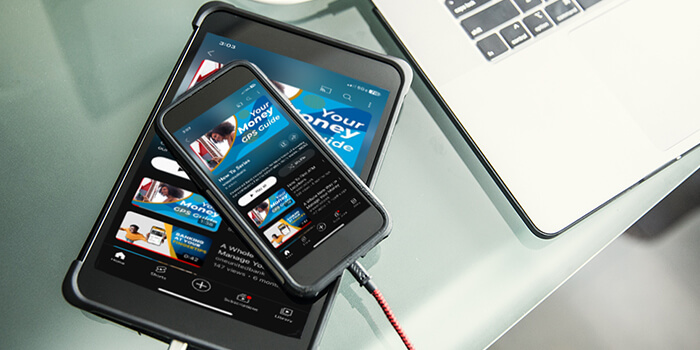Summary
A solid budget is one of the most powerful instruments to improve financial wellness. But how do you build one? Join us as we walk you step by step through the basics of budgeting.
Budgeting is one of the most effective ways to take control of your finances.
It’s not just about cutting back. It’s a system for managing your income, tracking your spending, and making intentional decisions about where your money goes.
Whether you’re handling everyday expenses or saving toward a specific goal, a clear budget helps you stay organized, reduce stress, and build financial stability.
What is a Budget
A budget is a plan for your money. It helps you understand what’s coming in, what’s going out, and how to align your spending with your priorities.
When to Create a Budget
Create or revisit your budget anytime your financial situation changes. Starting a new job, moving to a new city, taking on new expenses, or setting a savings goal are all good reasons. The best time to start is before you feel overwhelmed.
Why Budgeting Matters
Without a budget, it’s easy to lose track of spending or feel uncertain about your financial progress. A budget helps you stay in control. It gives you a roadmap for reaching goals, building savings, and avoiding unnecessary debt or overspending.
Budgeting in Action
Start by understanding your budget purpose. Are you budgeting to cover monthly bills, build an emergency fund, or save for a vacation or major purchase?
Some budgets focus on a single goal, like saving for a home. Others help with long-term financial maintenance. The approach should match your situation and evolve as your needs change.
Simple Monthly Budget Template
This framework follows a monthly budget for everyday life. It can be customized for alternative goals.
1. Calculate Your Income
Your income is the money you bring in each month after taxes. This includes your paycheck, side hustles, benefits, or any consistent financial support.
If your income varies, use your lowest average month as a starting point.
2. Identify Your Expenses
Break expenses into two categories:
- “Fixed” means anything that stays the same each month and includes things like rent, utilities, subscriptions, and loan payments.
- “Variable” means anything that changes based on demand and includes things like groceries, transportation, and personal spending.
You can see patterns and spot overspending of your expenses across your accounts with Money Management. It’s Essential!
3. Prioritize Savings
A smart money trick is to treat your savings like a required expense. Automate a portion of your income toward a savings goal or emergency fund.
Many forget to think about savings when they are creating their budgets. Budget not just within your means, but below your means. That way, you have, at worst, a cushion to fall on and, at best, money to stash away out of sight.
4. Balance Your Budget
Subtract expected expenses and savings from your total income. If there’s a shortfall, review your variable spending and make adjustments.
As you are creating your budget, add a “want” and “need” tag to each line item. When your budget is pushed beyond its limit, that is a sign to review these wants and needs.
You will quickly notice which things you could go without and how your budget could be positively affected by removing them.
5. Review Regularly and Adjust
Set aside time each month to check your progress. Budgets should reflect your current life, not outdated numbers.
If you’re saving for a short-term goal like a vacation, holiday gifts, or a new laptop, use the same structure with one key addition: a timeline.
Start by calculating the total cost of your goal. Let’s say you want to take a $1,200 trip in twelve months. Divide $1,200 by twelve, and your monthly savings target is $100.
Add that $100 as a dedicated line item in your monthly budget under savings. Then look at your variable expenses to see where you can cut or adjust. Can you reduce ordering takeout, pause subscriptions, or limit impulse purchases to prioritize your new goal?
By giving your goal a number and a deadline, you create a plan that’s both actionable and motivating. Instead of wondering if you can afford the trip, you’re building your trip month by month.
Budgeting Tips
- Overestimate your expenses to avoid surprises.
- Underestimate income to stay on the safe side.
- Review spending patterns at the same time each month, preferably on the last day.
- Review all your subscriptions to find forgotten recurring costs that add up but add little value.
- Track small, frequent purchases like coffee, which can add up.
A well-structured budget is not about limitations. It is a tool for making informed financial decisions.
Whether you are establishing your first budget or refining an existing one, this process provides the foundation for long-term financial wellness.


















